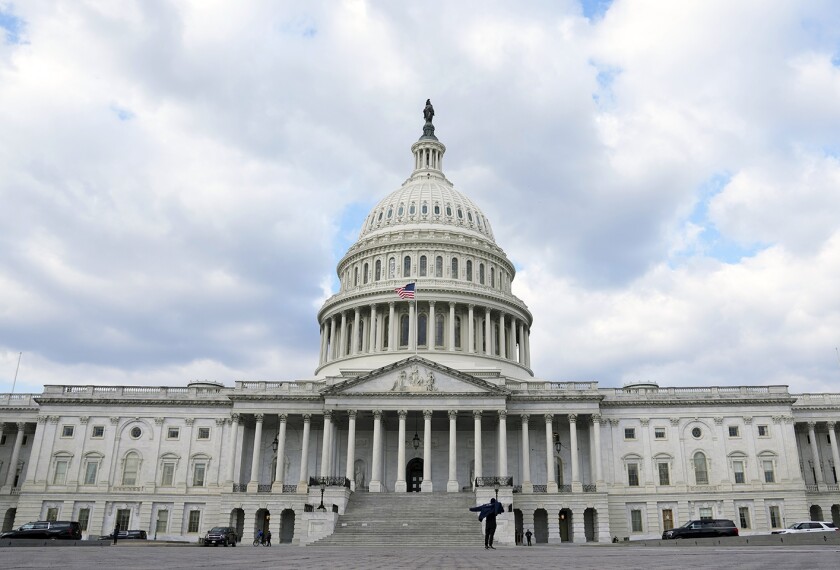Just as a draft of K-12 common standards designed to prepare students for college and the workforce was set to be released for public comment this week, a new report finds that more than half the states have revamped their high school standards to emphasize such readiness upon graduation.
But the report, based on a survey of states, indicates that states have been slower to embrace assessments, high school graduation requirements, and, most especially, “comprehensive” accountability systems to match the standards.
“First and foremost, college and career readiness is now a national priority, as a result of the leadership of the states,” Michael Cohen, the president of Achieve, a Washington-based nonprofit that issued the report, said at a briefing here last week. His group is also helping to develop the common standards.
Mr. Cohen suggests that the common-standards initiative has emerged in part as an outgrowth of the increased similarity in the expectations many states have set in revising their standards. The Achieve report says the number of states with standards it deems “college- and career-ready” has grown from three to 31 since 2005—with eight added in the past year.
One day after the report came out, a group of federally recognized teacher fellows gathered for a panel discussion to offer their take on national standards, revealing somesupport for the idea, along with plenty of cautions.
“I’m worried a little bit about the naiveté to say that if we have [national] standards, that that will be meaningful for changing instructional practice,” said Kirk Janowiak, a high school biology and environmental-science teacher from Indiana. “Those of us who have been in the classroom long enough know that it’s not so much the standards that drive our curriculum, but the assessments. And the standards don’t always drive the assessments.”
Mr. Janowiak and the other panelists are in the current roster of Albert Einstein Distinguished Educator Fellows, a federal program that offers teachers in the STEM fields of science, technology, engineering, and math a chance to serve in the national policy arena.
“What is tested is what is taught,”chimed in Sarah Yue, a chemistry teacher from California who is serving her fellowship at the National Science Foundation. “What we have in most states is a system of multiple-choice, standardized tests, usually very short, usually highly factually based, but high stakes for teachers, high stakes for schools.”
She added: “What teachers end up doing, what schools end up promoting, is teaching students those facts that they need to be able to regurgitate on those tests.”
Thousand-Plus Comments
In all, 48 states and the District of Columbia have signed on to support the common-standards effort, which the National Governors Association and the Council of Chief State School Officers are leading.
The K-12 grade-by-grade standards will cover English/language arts and math, as well as literacy skills that secondary students need for learning history and science. They build on college- and career-readiness standards issued for public comment last fall. Those standards are still being revised.
“If the career- and college-ready standards are any indication, we will probably have more than the 1,100 [public comments] that we received from the first set,” Dane Linn, the director of the education division at the NGA’s Center for Best Practices, said of the K-12 standards, at the Achieve event.
“We have really spent a significant amount of time vetting these standards with the states,” he said, as well as tapping the expertise of educators and national organizations, among others.
But an early draft has drawn criticism, including concerns that the standards were confusing and insufficiently user-friendly. (“Reviewers Urge Standards Fixes,” Feb. 3, 2010.)
The Achieve study, “Closing the Expectations Gap 2010,” is the fifth annual report on state progress on the career- and college-ready agenda. Achieve began conducting the survey after launching the American Diploma Project Network, a coalition of states committed to aligning their education systems with the demands of college and the workplace.
While the report finds that 31 states have college- and career-ready standards, fewer than half that number, 14, are now measuring such preparation through their assessment systems. Sixteen states have begun using P-20 data systems that annually match K-12 and postsecondary student-level data.
It finds 20 states and the District of Columbia have adopted high school graduation requirements that compel all students to complete curricula that prepare them for college and a career, with four years of “challenging” math—including a course akin to Algebra 2—and four years of grade-level English.
Only one state, Texas, meets the minimum criteria Achieve sees as needed for a reporting and accountability system that adequately measures and provides incentives for college and career readiness. The criteria include such factors as whether a state publicly reports the percentage of students who score at the college-ready level on assessments down to the school level, has set goals for raising that percentage, and offers incentives to schools and districts that make gains.
“Progress on accountability has been slow,” the report says. “Although many states have moved aggressively to raise standards, few have incorporated those standards into their high school accountability systems.”
Mr. Cohen said it’s not surprising that states are furthest along on the standards front.
“The standards are the foundation for those other policies,” he said. “We’re beginning to see progress on those others, not as fast as we might like, but things are moving in the right direction.”
‘We’ve Got It Now’
Participants at the Achieve event also discussed the federal government’s increased efforts to promote common standards and college and career readiness, which have drawn some strong criticism. State applications under the Race to the Top competition are being judged in part on whether a state is planning to adopt the common standards. Second, the Obama administration recently proposed to tie federal Title I aid for disadvantaged students to a state’s adoption of college- and career-ready standards. That could be demonstrated by participation in the common-standards initiative or getting verification from a state’s higher education community, administration officials say. (“Standards, Title I Link Scrutinized,” March 3, 2010.)
“I don’t think anybody has the guts to withhold Title I money from any state over this issue,” said Gov. Phil Bredesen of Tennessee, a Democrat, at the event.
Overall, he said, federal support for common standards and the college and career agenda could be helpful if it doesn’t go too far.
“To the extent to which the federal government will get behind and support this movement, that’s a wonderful thing,” he said. “To the extent to which they say, ‘OK, you guys have taken it a little way down the road, we’ve got it now,’ that’s not a good thing.”




